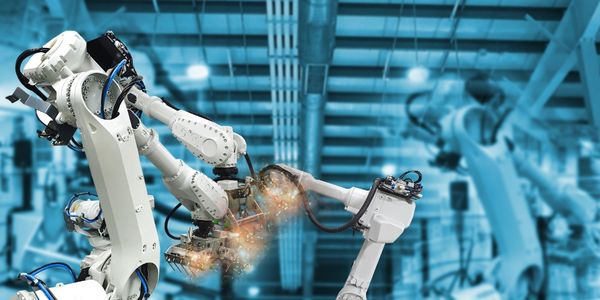Technology Category
- Platform as a Service (PaaS) - Device Management Platforms
- Wearables - Implants
Applicable Industries
- Equipment & Machinery
- Healthcare & Hospitals
Applicable Functions
- Product Research & Development
- Quality Assurance
Use Cases
- Virtual Prototyping & Product Testing
- Virtual Reality
Services
- Testing & Certification
About The Customer
NuVasive Inc., based in San Diego, California, is a medical device company focused on the design, development and marketing of products for the surgical treatment of spine disorders. Ranking no. 3 in the US spine industry, they specialize in minimally disruptive surgical procedures and are the pioneers of lateral access spine surgery with eXtreme Lateral Interbody Fusion (XLIF®). Through innovative technological advancements, NuVasive has successfully progressed major spine surgery to where many patients have experienced extraordinary results—they are often walking the same day of surgery, experiencing reduced blood loss, spending less time in the hospital, and being able to return to work within four to six weeks (versus the traditional six months).
The Challenge
The challenge faced by NuVasive Inc., a medical device company specializing in the surgical treatment of spine disorders, was to predict how a device will perform while ensuring they are safe and effective, before a single prototype is built. The company wanted to leverage computational modeling and simulation to eliminate bad ideas and refine the good ones long before they leave the drawing board. The objective of this project was to take anatomic geometry obtained from a CT scan and develop a finite element model that could evaluate the biomechanical stability of different interbody cage footprints that is typically performed using cadaveric testing. Since bone geometry is unique to each individual, and bones are not symmetric, a manual hexahedral (HEXA) meshing approach needed to be established in order to build models with a repeatable process.
The Solution
The solution was pre-processing with HyperMesh. The vertebral bodies of the lumbar spine needed to be hex meshed and seamlessly connected to the posterior region using tetra elements. This would allow for a uniform mesh between the vertebral bodies and the intervertebral discs. Creating hex elements instead of standard tetra elements in the intervertebral body and discs allowed quicker run times. NuVasive looked at different software options in the market that could help them build such a model quickly and efficiently. With the solid meshing capabilities of HyperMesh and its powerful morphing tool they were able to quickly model the lumbar, while satisfying their analysis requirements. The manual HEXA meshing approach process included the use of HyperMorph module to project elements onto geometry in exact areas. This was a customized process using the existing tools in HyperMesh to fit the customer’s needs in this unique application.
Operational Impact
Quantitative Benefit

Case Study missing?
Start adding your own!
Register with your work email and create a new case study profile for your business.
Related Case Studies.

Case Study
Smart Water Filtration Systems
Before working with Ayla Networks, Ozner was already using cloud connectivity to identify and solve water-filtration system malfunctions as well as to monitor filter cartridges for replacements.But, in June 2015, Ozner executives talked with Ayla about how the company might further improve its water systems with IoT technology. They liked what they heard from Ayla, but the executives needed to be sure that Ayla’s Agile IoT Platform provided the security and reliability Ozner required.

Case Study
IoT enabled Fleet Management with MindSphere
In view of growing competition, Gämmerler had a strong need to remain competitive via process optimization, reliability and gentle handling of printed products, even at highest press speeds. In addition, a digitalization initiative also included developing a key differentiation via data-driven services offers.

Case Study
Predictive Maintenance for Industrial Chillers
For global leaders in the industrial chiller manufacturing, reliability of the entire production process is of the utmost importance. Chillers are refrigeration systems that produce ice water to provide cooling for a process or industrial application. One of those leaders sought a way to respond to asset performance issues, even before they occur. The intelligence to guarantee maximum reliability of cooling devices is embedded (pre-alarming). A pre-alarming phase means that the cooling device still works, but symptoms may appear, telling manufacturers that a failure is likely to occur in the near future. Chillers who are not internet connected at that moment, provide little insight in this pre-alarming phase.

Case Study
Premium Appliance Producer Innovates with Internet of Everything
Sub-Zero faced the largest product launch in the company’s history:It wanted to launch 60 new products as scheduled while simultaneously opening a new “greenfield” production facility, yet still adhering to stringent quality requirements and manage issues from new supply-chain partners. A the same time, it wanted to increase staff productivity time and collaboration while reducing travel and costs.

Case Study
Integration of PLC with IoT for Bosch Rexroth
The application arises from the need to monitor and anticipate the problems of one or more machines managed by a PLC. These problems, often resulting from the accumulation over time of small discrepancies, require, when they occur, ex post technical operations maintenance.

Case Study
Robot Saves Money and Time for US Custom Molding Company
Injection Technology (Itech) is a custom molder for a variety of clients that require precision plastic parts for such products as electric meter covers, dental appliance cases and spools. With 95 employees operating 23 molding machines in a 30,000 square foot plant, Itech wanted to reduce man hours and increase efficiency.



